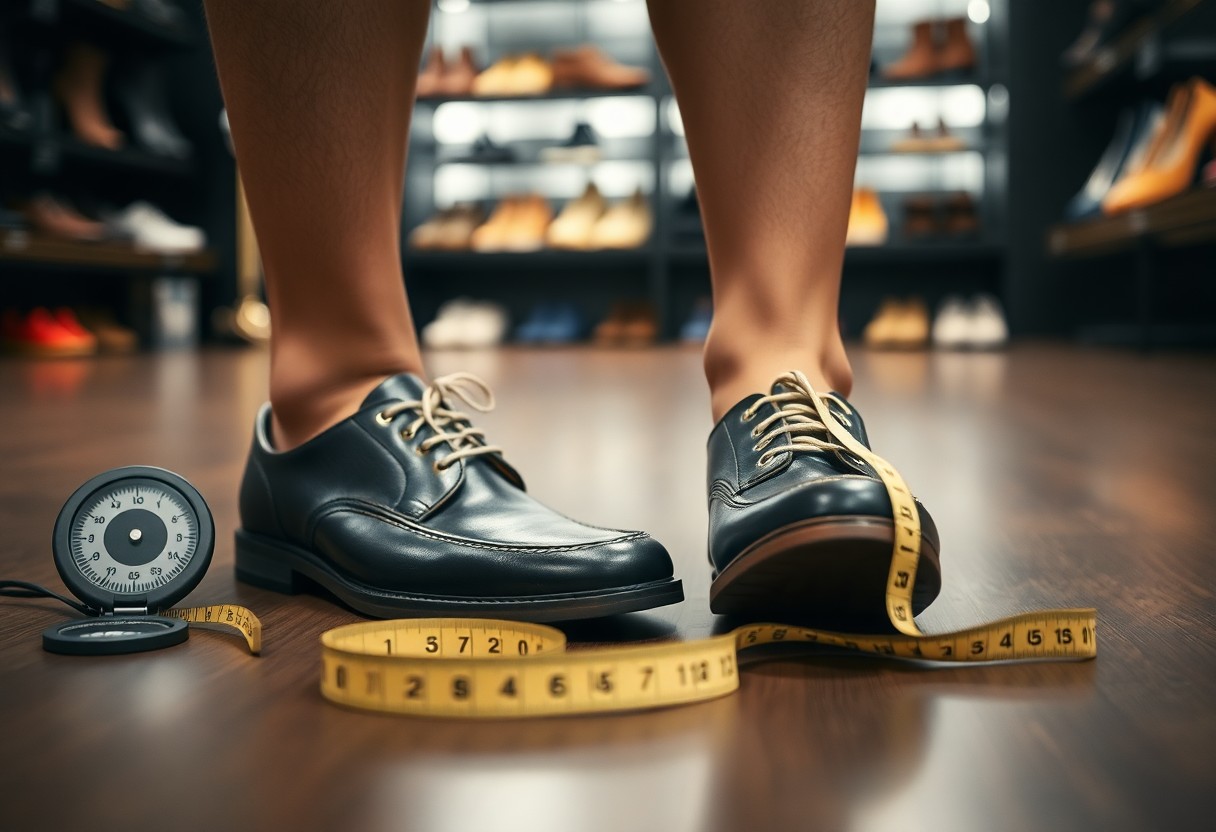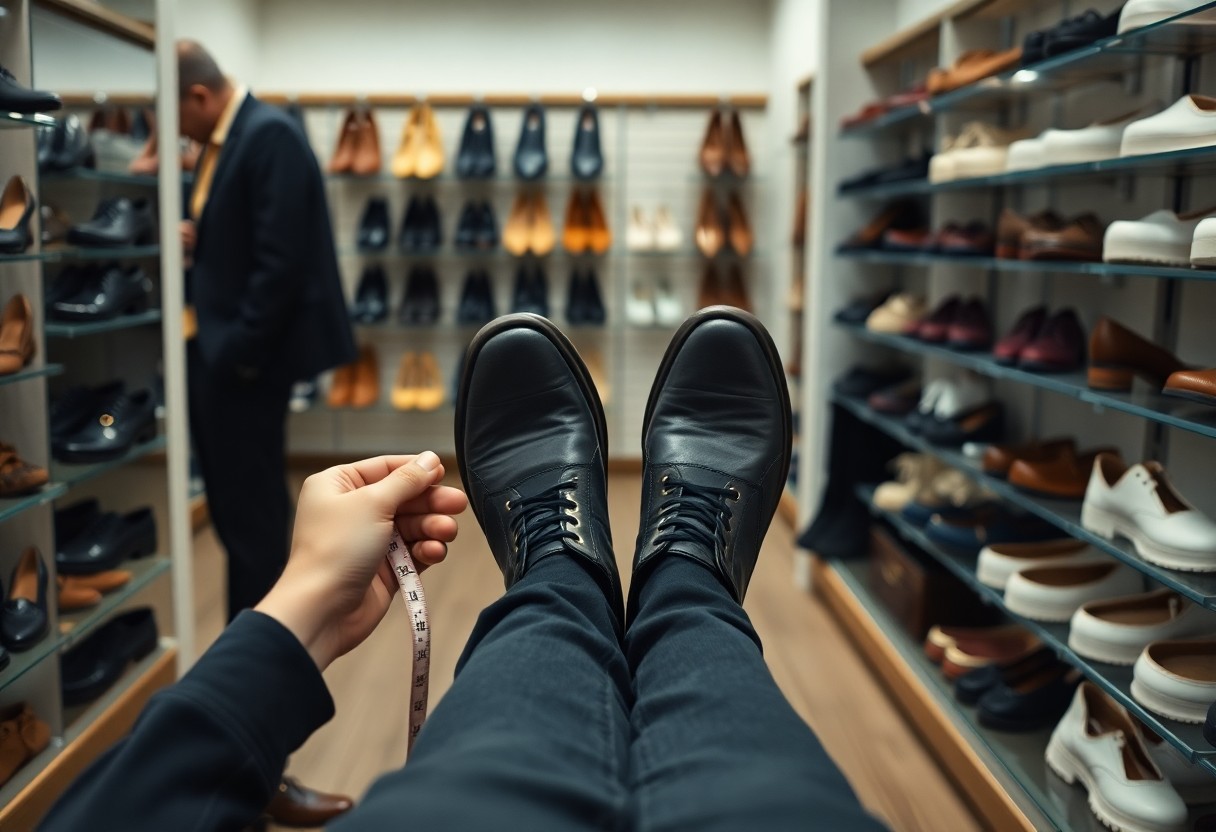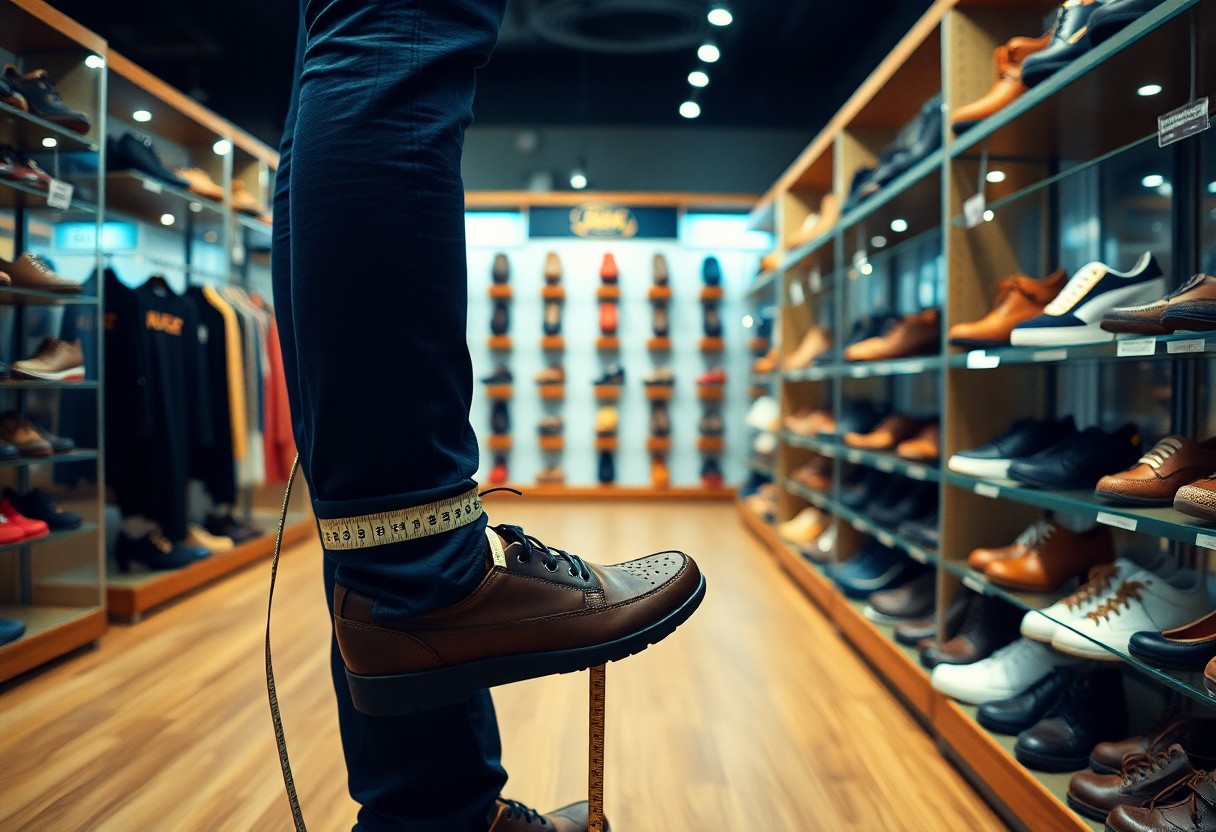
Understanding the intricacies of selecting the perfect shoe size is crucial for maintaining foot health. Wearing shoes that do not fit properly can lead to a range of complications, from minor blisters to severe, long-term joint issues. Since our feet support our entire body weight, poorly fitting shoes can significantly impact daily comfort, mobility, and overall quality of life. It’s essential to identify the signs indicating your shoes are not fitting correctly, as this awareness is vital for preserving your foot health. Research highlights that an astonishing 75% of individuals experience foot problems due to incorrect shoe sizing. This comprehensive guide will equip you with the insights needed to evaluate your current footwear and discover the ideal size customized for your feet.

Identify the Critical Indicators of Ill-Fitting Footwear
Taking proactive steps to safeguard your foot health requires the ability to recognize the key indicators associated with ill-fitting shoes. Studies reveal that 60% of individuals are currently wearing shoes that do not fit correctly, which can lead to various foot-related issues. Your footwear should provide ample space for your toes to move freely, offer appropriate arch support, and maintain consistent comfort throughout the day. Wearing shoes that do not fit properly can cause long-lasting damage to your feet and may even affect your natural walking mechanics.
Identifying Physical Symptoms of Shoe Discomfort
Physical symptoms indicating your shoes may not fit correctly can include blisters, calluses, and corns forming on your feet. You may notice redness or bruising on your toes, particularly after extended periods of walking or standing. Additionally, your toenails might appear damaged or discolored. If you observe these symptoms, it clearly indicates that your shoes might be too tight or too loose, necessitating immediate resizing.
Evaluating Comfort Levels for the Ideal Shoe Fit
Contrary to common beliefs, new shoes should feel comfortably fitting right from the moment you put them on. Your toes need sufficient room to move without constraint, and your heels should remain securely in place without slipping while you walk. Experiencing pain or numbness in your feet is never a normal occurrence and serves as a significant warning sign of an improper fit. Ensure that your shoes provide adequate arch support and cushioning that aligns with your unique foot requirements.
Conducting a comprehensive comfort assessment involves trying on shoes at different times of the day, as your feet naturally swell and change shape throughout the day. When fitting shoes, aim for a space of approximately 3/8 to 1/2 inch between your longest toe and the front of the shoe. It’s essential to walk on various surfaces to thoroughly assess comfort levels. If you experience any discomfort or pressure points, exploring different sizes or styles may be necessary to achieve an optimal fit.

Mastering the Process of Accurately Measuring Your Feet for Proper Shoe Size
Obtaining the correct shoe size depends on accurately measuring both of your feet. It’s vital to recognize that your feet may vary in size by as much as half a size, and foot dimensions can change throughout the day. For the most precise results, measure your feet in the afternoon, when they are likely to be slightly swollen, ensuring the best possible fit.
Utilizing Professional Measurement Tools for Accurate Sizing
Professional shoe fitting often employs a Brannock Device, which accurately measures your foot’s length, width, and arch length. This comprehensive three-dimensional measurement is essential for determining your exact shoe size. A trained shoe specialist will measure both feet while you stand, taking into account weight distribution and the natural spreading of your feet under weight.
Employing At-Home Measurement Techniques to Ensure Accuracy
To measure your feet conveniently at home, place a piece of paper on a flat surface and trace the outline of your foot while standing. Measure the distance from your heel to your longest toe and the width at the widest point of your foot. To ensure there is enough space for toe movement and overall comfort, add an additional 3/8 inch to these measurements.
To further enhance the accuracy of your at-home measurements, it’s advisable to measure your feet in the evening while wearing the socks intended for your new shoes. Ensure there’s a thumb’s width of space between your longest toe and the shoe’s tip; this allowance is crucial to prevent toe injuries and support natural movement during walking.
Avoiding Common Mistakes in Shoe Sizing
Many people mistakenly believe they fully understand their correct shoe size, yet studies indicate that up to 60% of individuals wear shoes that do not fit properly. Common mistakes include clinging to the same shoe size over time, neglecting to consider width measurements, and overlooking size differences between your feet. These oversights can result in serious foot complications and significant discomfort.
Understanding Size Discrepancies Across Different Shoe Brands
Variations in sizing among different shoe brands can greatly affect your comfort. For instance, a size 8 in one brand might correspond to a size 9 in another, owing to differing manufacturing standards and design philosophies. Always try on shoes regardless of the size marked on the label, as these discrepancies can have profound implications for your foot health.
Timing Your Shoe Shopping for the Best Fit
The timing of your shoe shopping is crucial. Your feet naturally swell throughout the day, potentially expanding by as much as half a size larger by the evening. Shopping in the afternoon maximizes your chances of finding shoes that accommodate your daily requirements.
Moreover, your feet may swell during physical activities or in warmer weather. Purchasing shoes too early in the day can result in tight-fitting footwear that becomes uncomfortable later on. Always ensure there is a thumb’s width of space between your longest toe and the shoe’s tip when trying on new shoes in the afternoon.

The Profound Health Impact of Choosing the Correct Shoe Size
The shoe size you select can have a significant influence on your overall health. Wearing ill-fitting shoes can affect your entire body, from your toes up to your spine. Research indicates that 72% of individuals experience foot-related health issues due to incorrect shoe sizes, which can lead to altered walking patterns and subsequent posture problems.
Immediate Consequences of Wearing Poorly Fitting Shoes
In terms of immediate comfort and health, wearing shoes that are the wrong size can result in blisters, corns, and painful pressure points. You may also experience foot fatigue, strain in your ankles, and impaired balance. These issues can disrupt your daily activities, leading to discomfort while walking, with 85% of individuals reporting immediate discomfort when donning ill-fitting shoes.
Long-Term Consequences of Wearing Incorrect Shoe Sizes
Prolonged use of shoes that do not fit properly can lead to permanent foot deformities, including conditions such as bunions, hammer toes, and plantar fasciitis. Changes in your walking pattern may develop as you compensate for discomfort, potentially causing knee, hip, and back problems. Research suggests that 60% of chronic foot issues can be traced back to improperly fitting shoes.
The repercussions of wearing the wrong shoe size extend beyond foot health. You may experience poor posture, diminished mobility, and chronic pain. Medical studies demonstrate that proper shoe fit can prevent up to 80% of common foot issues and significantly enhance your overall quality of life. The footwear choices you make today can create lasting effects on your foot health for years to come.
Special Considerations for Various Life Stages and Health Conditions
It is essential to recognize that your feet require particular attention during different life stages and health conditions. Factors such as age, weight changes, and specific medical issues can greatly impact your shoe size. Regular foot measurements are crucial, as wearing the wrong size can lead to serious foot problems and reduced mobility.
Foot Size Changes Related to Aging
As you age, your feet undergo significant transformations that can affect their size and shape. The natural aging process can lead to wider and flatter feet due to a loss of elasticity in tendons and ligaments. Research suggests that foot size can increase by half a size every decade after the age of 40. It is advisable to measure your feet annually to ensure you maintain a proper fit.
Health Conditions That Affect Shoe Size
Your overall health has a significant impact on determining your shoe size. Conditions like diabetes, arthritis, and edema can cause noticeable foot swelling, necessitating adjustments in shoe size. For individuals with such conditions, paying close attention to shoe fit is paramount to avoid complications.
Additionally, certain medications may result in foot swelling as a side effect. Poorly fitting shoes can exacerbate existing health issues and create new complications. For those with diabetes, regular foot inspections are essential, and it’s vital to ensure that shoes offer adequate space and support. Research indicates that appropriate footwear can reduce the risk of diabetic foot complications by up to 50%.
Key Guidelines for Successful Shoe Shopping
Despite common misconceptions, effective shoe shopping requires meticulous attention to detail. Your foot size may vary throughout the day, making afternoon shopping the ideal time when your feet are at their largest. As your feet naturally expand during daily activities, this timing will yield the most accurate fit measurements.
Essential Tips for Ensuring Proper Shoe Fit
Obtaining the right fit goes beyond merely measuring length; it involves several critical considerations to ensure a proper fit:
- Ensure a thumb-width space exists between your longest toe and the shoe tip
- Confirm that arch support is suitable for your foot type
- Try on shoes with your regular socks for the best fit
- Walk around to assess heel grip and overall comfort
Any discomfort experienced during the initial fitting is likely to worsen with extended wear, making it crucial to address these concerns immediately.
Knowing When to Replace Worn-Out Shoes
It’s essential to replace shoes when they show specific signs of wear. Look for worn treads, uneven sole wear, or if you have logged 400-500 miles in athletic footwear.
When your shoes exhibit these warning signals, don’t hesitate to replace them: visible creasing in the midsole, loss of cushioning, or wear in the interior lining. Your feet require reliable support every 8-12 months for daily-wear shoes, and even more frequently for athletic ones. Continuing to wear worn-out shoes can lead to serious foot pain and injury.
Frequently Asked Questions Regarding Shoe Sizing
Q: How can I tell if my shoes are too tight during daily wear?
A: Be vigilant for these visible signs: numbness or tingling sensations in your toes, blisters forming on your heels or toes, and noticeable red marks on your feet after removing your shoes. Your toes should have enough room to wiggle freely, and your heel should remain secure without slipping during movement. If you notice pressure points or discomfort after wearing shoes for just a few hours, it’s likely that your shoes are too tight.
Q: What’s the best time of day to measure foot size and try on new shoes?
A: The optimal time to measure your feet and try on new footwear is in the late afternoon or evening. Feet naturally swell throughout the day, reaching their maximum size by evening. This timing ensures that you select shoes that will fit comfortably even when your feet are at their fullest. Always remember to measure both feet, as one foot is often slightly larger than the other.
Q: How much space should there be between my longest toe and the front of the shoe?
A: You should allow for approximately 3/8 to 1/2 inch (or a thumb width) of space between your longest toe and the shoe tip. This gap permits natural foot movement while walking and helps prevent injuries to your toes. Your toes should never touch the front of the shoe while standing or walking. To check this, stand up and slide your finger behind your heel – it should fit snugly without feeling tight.
The Article How to know if you’re wearing the right shoe size signs and tips for a perfect fit appeared first on My Shoes Finder
The Article Signs and Tips for Knowing Your Right Shoe Size Was Found On https://limitsofstrategy.com
The Article Right Shoe Size: Tips and Signs to Find Your Fit First Appeared ON
: https://ad4sc.com
Comments are closed